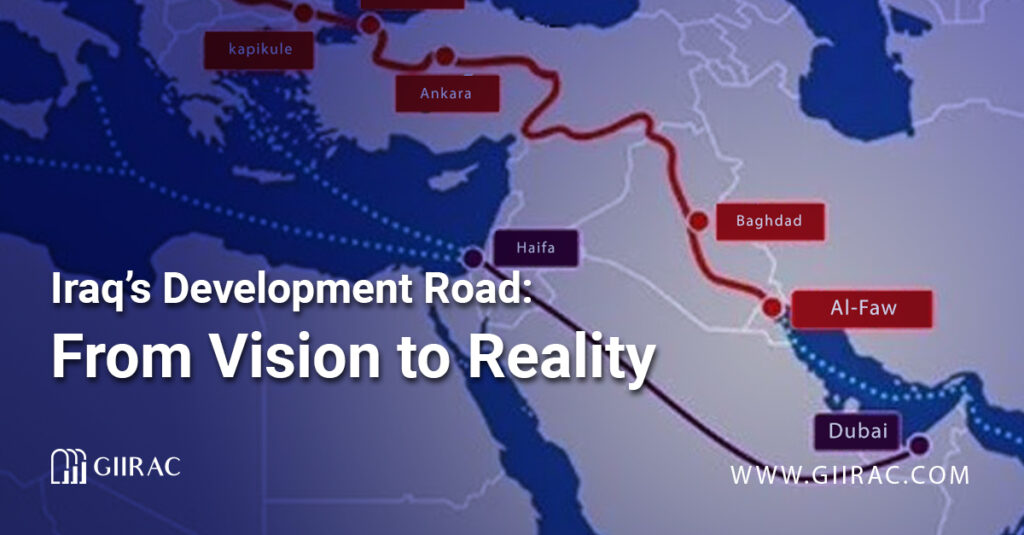Iraq’s Development Road is poised to become a game-changer in the region’s economic and geopolitical landscape. This ambitious infrastructure project aims to create a strategic transportation corridor that connects the Grand Faw Port in the south to the Turkish border in the north, stretching further into Europe. The vision is clear: establish Iraq as a central transit hub between Asia and Europe, offering a vital alternative to traditional trade routes such as the Suez Canal. The project promises to revolutionize global trade flows, facilitating efficient transportation between the Gulf region and Europe.
At the heart of this transformation is the construction of a 1,200-kilometer corridor, combining railways and highways, which will allow for seamless movement of goods and people. The Grand Faw Port, set to become one of the largest in the Middle East, will serve as the southern terminus. With 100 berths and a sprawling free trade area, it will handle significant volumes of cargo, creating a vital link in global supply chains. The rail and highway systems are designed to accommodate both freight and passenger services, supporting Iraq’s broader economic diversification goals by reducing dependence on oil revenues. The entire project is estimated to cost $17 billion, with $6.5 billion allocated for highways and $10.5 billion designated for an electrified railway, ensuring a modern and efficient infrastructure.
Strategic partnerships play a key role in the realization of this project. In April 2024, Iraq signed a quadrilateral agreement with Turkey, Qatar, and the UAE to collaborate on the development of the Road. This regional cooperation underscores a collective commitment to enhancing connectivity and economic integration. The project is expected to generate $4 billion in annual revenue and create up to 100,000 jobs in its first phase, offering significant economic benefits to Iraq and its neighbors.
However, the Development Road is not without its challenges. Iraq’s complex political dynamics, security concerns, and competition from existing trade routes in the region could impact the project’s implementation. Ensuring broad political support and addressing security issues will be critical to its success. Moreover, the project must offer a more efficient and secure alternative to existing trade routes to attract global investment and trade flows.
In conclusion, Iraq’s Development Road is more than just an infrastructure project; it is a bold vision for the country’s future. With the right investments, partnerships, and strategic planning, this corridor has the potential to reshape Iraq’s economic landscape, enhance its geopolitical role, and become a cornerstone of global trade between Asia and Europe. The road from vision to reality may be long, but the promise it holds is undeniable.

